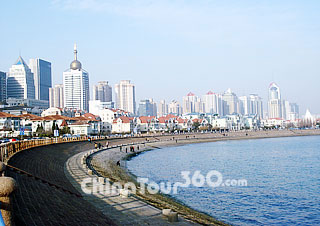 Qingdao City
Qingdao City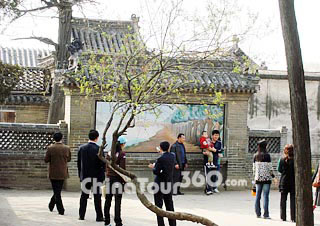 Kong Family Mansion, Qufu
Kong Family Mansion, Qufu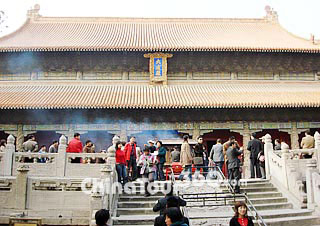 Qufu Temple of Confucius
Qufu Temple of Confucius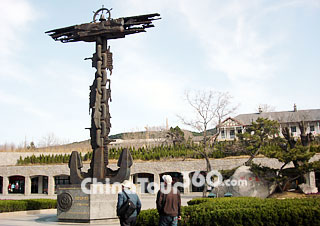 Weihai Liugong Island
Weihai Liugong Island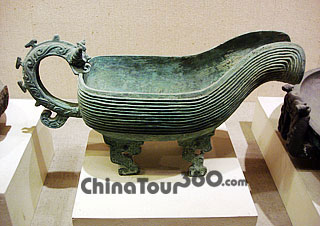 A Bronze Drinking Vessel
A Bronze Drinking Vessel
Shandong Province is often considered as a seat of Chinese culture. Situated along the east coast of China between Hebei and Jiangsu provinces it juts out into the East China Sea. If the map of China looks like a chicken, then Shandong Province's map is like a vulture.
Shandong (literally means east of mountain) takes its name from its location to the east of the Taihang Mountains. Situated in the lower reaches of the Yellow River, the province's territory consists of the Shandong Peninsular and adjacent inland. Protruding into the conjunction area of the Bohai Sea and the Yellow Sea, the peninsula faces the Liaodong Peninsular of Liaoning Province over the sea. Its inland adjoins the provinces of Hebei, Henan, Anhui and Jiangsu. The province covers an area of 60,502 square kilometers (23,360 square miles). Shandong with its peninsula and main-land parts may be divided into four topographical zones: the Northwestern Shandong Plain, the Jiaolai Plain, the Central-South Shandong Hilly Area and the Jiaodong Hilly Area. The Yellow River and the Grand Canal are the major waterways.
During the Spring and Autumn Period (770 - 476 BC) and the Warring States Period (476 - 221 BC), regional states became increasingly powerful. At that time, it was home to two powerful states: the state of Qi at Linzi and the state of Lu at Qufu. Therefore, a common nickname for Shandong is Qilu.
Shandong has a warm-temperate monsoonal climate, with hot, rainy summers and dry, sunny winters. In winter, it is more humid and warm in Shandong than in north China. Its coastal and inland regions experience a sharp difference in climate. It has a mean annual temperature of 12 - 14 degrees Celsius (53.6 - 57.2 degrees Fahrenheit), increasing from the northeastern seaboard to the west and the south.
With beautiful natural landscapes and numerous historical and cultural relics, the province has rich tourist resources. There are a number of famous cities in Shadong Province. Among its famous scenic spots and historical sides are Taishan Mountain, Laoshan Mountain, the Lingyan Temple, seaside of Jiaodong Peninsular, Kong Family Mansion, Cemetery of Confucius and Temple of Confucius in Qufu. Qufu and Jinan cities are famous historical and cultural cities in the world. Jinan, capital of Shandong Province, is known as the City of Springs with the famous Daming Lake and at least 72 famous springs.
It is considered a seat of Chinese culture for a couple reasons. The main reason is that it was the home of Confucius. The saying of Confucius can be found in The Analects. Confucian thought was (and still is) the foundation of tradition Chinese culture and relationships. Also, Sun Tzu, author of The Art of War, lived here.
![]() Attractions: Mount Tai & Weishanhu Lake
Attractions: Mount Tai & Weishanhu Lake
![]() Photos: Qingdao Photos, Qufu Photos, Dai Temple Photos, Liugong Island Photos, Zibo Photos
Photos: Qingdao Photos, Qufu Photos, Dai Temple Photos, Liugong Island Photos, Zibo Photos







